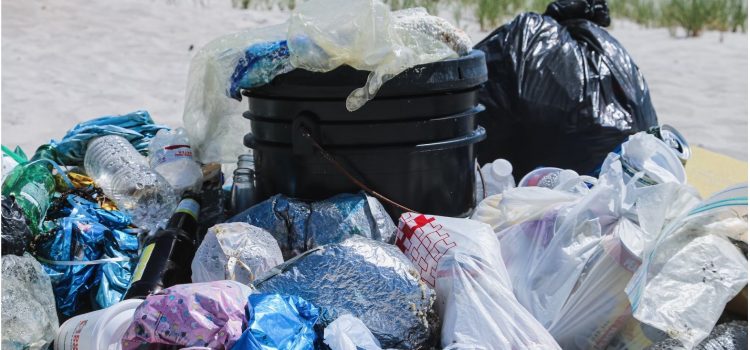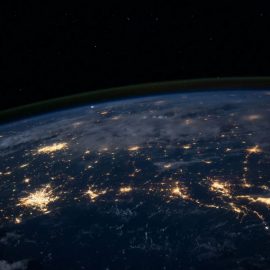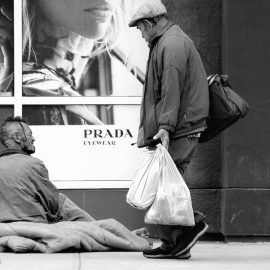
This is a free excerpt from one of Shortform’s Articles. We give you all the important information you need to know about current events and more.
Don't miss out on the whole story. Sign up for a free trial here .
What causes plastic pollution? What are the effects of plastic waste?
There are over 5 billion tons of plastic waste in the world, causing plastic pollution in the soil, the water, and even the air. Most plastic doesn’t get recycled—even recycling centers incinerate or dump most of the plastic they get.
Read on to learn more about what causes plastic pollution and the health and environmental effects.
Billions of Tons of Plastic Waste & Growing
Plastic is everywhere in the modern world, in everything from candy wrappers to cars. The sheer amount of plastic that humans produce—and discard—is staggering. Those concerned about rampant plastic use may wonder what causes plastic pollution when plastics are discarded, how this affects health and the environment, and how we can help to reduce plastic waste.
Overall, there are an estimated five billion tons of discarded plastic in the world, and it’s estimated that plastic production could triple by 2050. The first plastic ever manufactured (Parkesine) came out in 1862; by 1960, less than 100 years later, the U.S. alone was producing approximately 390,000 tons of plastic waste per year. In 2018, it produced nearly 36 million tons.
All of that plastic has to go somewhere. A recent Greenpeace report shows that the vast majority of plastic ends up polluting the environment in one way or another.
What Causes Plastic Pollution?
The Greenpeace report found that less than 5% of household plastic waste generated by U.S. households in 2021 ended up being recycled. This was not a failure of the households—most of the plastic that goes to recycling centers doesn’t actually get recycled. Instead, the centers simply incinerate the plastic or send it to landfills.
The report continues by saying that plastic recycling simply isn’t feasible: It’s too expensive, and in many cases it’s outright impossible. In fact, about half of the plastic waste that the U.S. once counted as “recycled” was in fact being exported to other countries such as China to be dumped or burned.
In short, although various companies and even government entities have touted recycling as the answer to plastic waste, research shows that it is not an effective solution to plastic pollution.
Environmental Impacts
The cause (and effects) of plastic pollution can be linked back to how plastics are destroyed after use. Almost all plastics are made from fossil fuels, meaning that incinerating them releases the same greenhouse gases as gasoline does. The impurities in plastic—the same impurities that make recycling so difficult—can release other toxic gases as well.
While incinerating plastic causes air pollution, storing it in landfills is also dangerous, as it allows harmful chemicals to leach into the soil and nearby water. To make matters worse, plastic takes a very long time to decompose: According to the World Wildlife Foundation, a thin plastic bag from the grocery store can take as many as 20 years to break down, while a plastic cup can take over 400 years. In other words, we produce plastic waste far more quickly than it breaks down, meaning that there is an ever-increasing amount of plastic in the world.
Plastic pollution also causes the release of microplastics. Microplastics—particles that fall away from plastic items such as bottles—are all over the world. Scientists have found microplastics in the air, in the deepest parts of the oceans, and inside human bodies. While we don’t have conclusive proof that microplastics are harmful, we’re exposed to so many chemicals every day that pinpointing exactly how much damage microplastics do (if any) is nearly impossible.
Fast Fashion and Pollution
With the emergence of fast fashion in the 2010s came an increase in global textile production and consumption—about 80 billion pieces of clothing are now sold each year (an increase of 400% over two decades), with Americans being the biggest consumers. However, this growth has had devastating consequences for the environment. Since 60% of fibers are now synthetic (polyester, the most widely used, is made of plastic derived from fossil fuels), clothes also release plastic microfibers every time they’re worn and washed. Much of this plastic ends up causing pollution in our oceans—according to one estimate, clothing is responsible for half a million tons of microfibers that find their way into the ocean each year.
Overflowing Landfills
These plastic-based textiles also add to non-biodegradable landfill waste: A garbage truck full of clothes goes into landfills every second. In the U.S., 85% of clothing ends up in landfills, while the UK throws out 13 million items of clothing each week. Meanwhile, Chile has a fast fashion graveyard in the Atacama Desert, where 39,000 tons of clothing—mostly secondhand items from the U.S., Europe, and Asia—are dumped annually.
How Can You Help?
Given how hard it is to safely destroy or reuse plastic, a key step to resolving plastic pollution is to reduce the amount of plastic waste we create in the first place. On an individual level, the best thing you can do is look for substitutes for the plastic goods you use most frequently. For example, you could buy a metal straw instead of using disposable ones, or look for food that’s packaged in cardboard or glass instead of plastic. Other common plastic substitutes include silicone, bamboo, and cloth.

Want to fast-track your learning? With Shortform, you’ll gain insights you won't find anywhere else .
Here's what you’ll get when you sign up for Shortform :
- Complicated ideas explained in simple and concise ways
- Smart analysis that connects what you’re reading to other key concepts
- Writing with zero fluff because we know how important your time is






